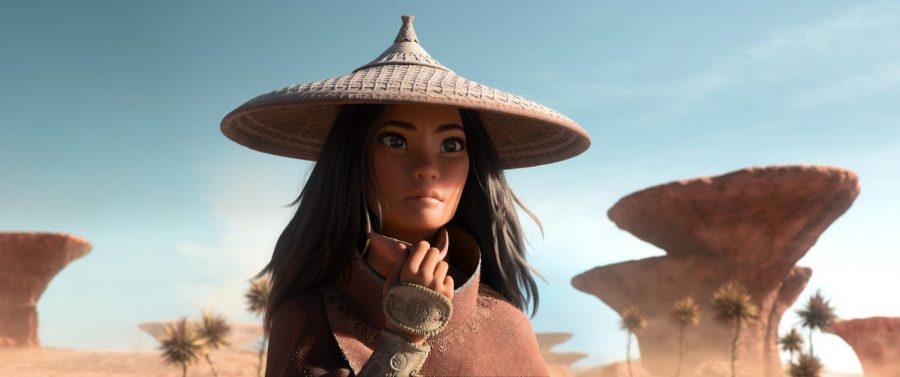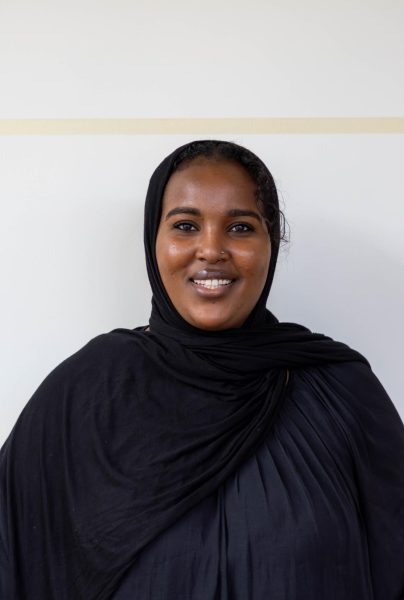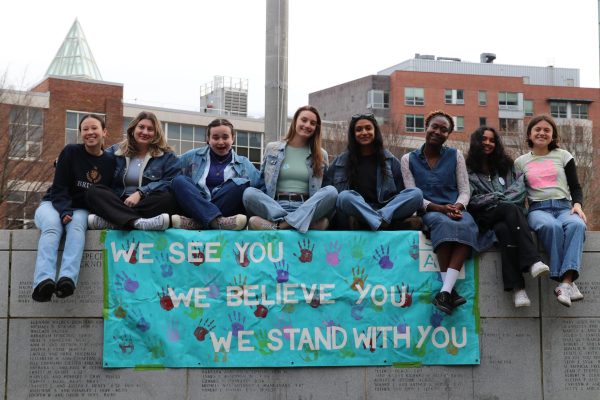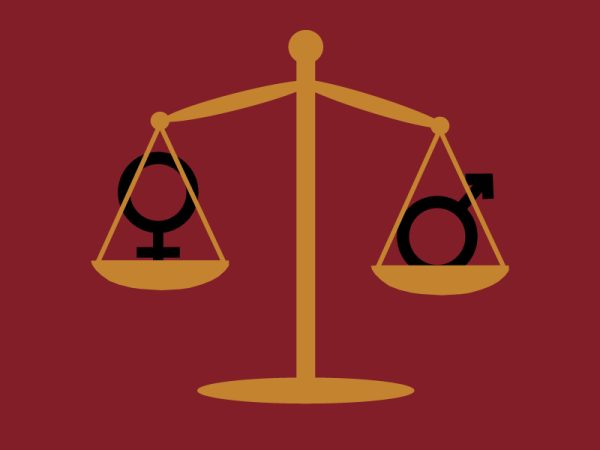Review: ‘Raya and the Last Dragon’ paves the way for Southeast Asian representation in the Disney canon
Photo courtesy Walt Disney Animation Studios
As an evil force threatens the kingdom of Kumandra, it is up to warrior Raya to leave her Heart Lands home and track down the legendary last dragon to help stop the villainous Druun. © 2020 Disney. All Rights Reserved.
March 10, 2021
Warning: Mild spoilers for “Raya and the Last Dragon” ahead
Producing a movie almost entirely during a pandemic is no easy feat, but leave it to the mouse to make it happen. Disney’s latest release, “Raya and the Last Dragon,” plunges us into a visually stunning fantasy world and introduces a new and powerful heroine into the Disney princess lineup.
The animated feature, which premiered March 5 in select cinemas and for premium access on Disney+, takes place in Kumandra, a made-up kingdom where humans and dragons used to live in harmony. When the land becomes plagued with Druun, malicious spirits that turn living beings to stone, Kumandra’s dragons create a magical orb to defend the kingdom. When the Druun turn the dragons to stone, the people of Kumandra fight for control of the orb, leading to a split. What was once one kingdom becomes five: Fang, Heart, Spine, Talon and Tail.
Raya (Kelly Marie Tran), the daughter of the Heart tribe’s chief, is learning to guard the orb when she befriends Namaari (Gemma Chan), the daughter of Fang’s chief. Thinking she can trust Namaari, Raya shows her the location of the orb, which leads to the orb’s destruction as Fang attempts to steal it. Each of the tribes claims a piece, while the Druun return and turn people to stone, including Raya’s father, Chief Benja (Daniel Dae Kim).
Following this tragedy, Raya spends six years on a quest to find Sisu (Awkwafina), the only known surviving dragon and the supposed creator of the orb. Upon meeting Sisu, Raya embarks on a journey to collect all the orb’s pieces, meeting a variety of sidekicks along the way, including Boun (Izaac Wang), a 10-year-old entrepreneur who lost his family to the Druun, Little Noi (Thalia Tran), an infant con artist, and Tong (Benedict Wong), the only surviving warrior from Spine.
Will Raya be able to save Kumandra, bring her people back to life and unite the tribes once again? You’ll have to watch to find out.
This release fills a gap in Disney’s storytelling by using inspiration from Southeast Asia to inspire Kumandra and its inhabitants, including Disney’s first Southeast Asian heroine, Raya. The directing team took a series of research trips to places like Laos, Indonesia, Thailand, Vietnam, Cambodia, Singapore and Malaysia in order to inform their process. The filmmakers created a Southeast Asian “story trust,” consisting of choreographers, linguists, anthropologists, musicians and more to provide authenticity, said co-directors John Ripa and Paul Briggs in a Feb. 24 Zoom seminar with Northeastern students.
The creative team includes Vietnamese American writer Qui Nguyen, Chinese Malaysian writer Adele Lim and Thai head of story Fawn Veerasunthorn.
Though Kumandra does not exist, its Southeast Asian influences are woven into the film. Ripa and Briggs said that all the clothing is wrapped, and there are no buttons in the film, which imitate the draping of sabai tops and sampot pants. Additionally, characters remove their shoes before entering sacred places, as is traditional in most Southeast Asian cultures.
However, the representation of Southeast Asian culture within the cast feels half-baked at best. Vietnamese American Kelly Marie Tran makes history as Disney’s first Southeast Asian princess, but controversy surrounds many of the other cast members, who are of East Asian descent, including Awkwafina, Daniel Dae Kim and Sandra Oh. Critics point out that it seems hypocritical for Disney to make a movie where they claim to represent Southeast Asia but do not reflect that in their casting.
There is no doubt that these actors draw big audiences. However, are they attracting mainly white audiences who are looking for mainstream names? Unfortunately, I would have to say yes. It feels as though Disney was so close to making real strides in terms of representation but missed the mark.
Although, it is important to note that this film opens the door for Southeast Asian people to see themselves on a Disney screen.
Ripa and Briggs said that they are looking forward to seeing young, Southeast Asian children dress up as Raya, as others have done with the previous princesses. The pair said they are growing tired of retelling the same stories with the same characters, and that “Raya and the Last Dragon” was a much-needed change.
Impressively, the film’s year of production took place during COVID-19. A typical animated Disney feature takes five years to make, with two years of research, two years of story and one year of production, said Ripa and Briggs. To create “Raya and the Last Dragon,” hundreds of animators worked from home and collaborated via Zoom. The voice actors also had to work from home, with Daniel Dae Kim recording from Hawaii in his closet and Awkwafina recording from a tent set up in her backyard.
Raya follows in the footsteps of Moana and Merida in being a Disney princess without a love interest, which continues to be refreshing. Although, Tran hints that Raya may be part of the LGBTQ+ community, suggesting that Raya’s love interest might be Namaari.
What’s fascinating is that there are very few men in the story to begin with. Raya, Sisu and Namaari are the film’s main characters, and they each have strengths and flaws. Raya is passionate and courageous, but often too trusting and too quick to anger. Sisu is loyal and kind, but not the most intelligent. Namaari is influenced by her mother’s greed, but she values her relationships with others.
Too often, we see movies that feature half-written female characters, but “Raya and the Last Dragon” does the opposite. I actually found myself curious about the men in the movie, as the three main ones get very little backstory or development. While some may lament this, I view it as a surprising but a somewhat nice diversion from the norm.
Overall, “Raya and the Last Dragon” is your classic tale of a powerful, young heroine on a mission to save her family and friends. The story is not necessarily groundbreaking, but the beauty of the animation, the specificity of the details and the multi-faceted characters make it incredibly compelling.
“Raya and the Last Dragon” is available to stream on Disney+ with premier access.


















